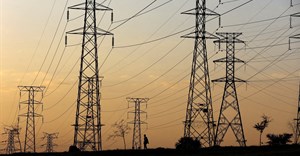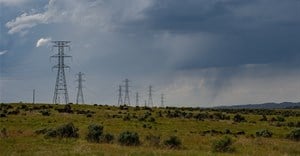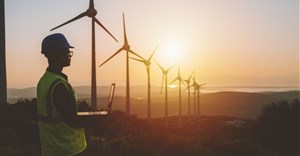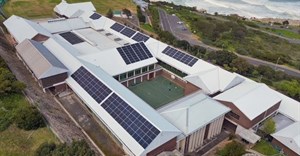Trending



 Sabre EMEA 2024 Awards: Razor PR, Retroviral top SA agenciesDanette Breitenbach
Sabre EMEA 2024 Awards: Razor PR, Retroviral top SA agenciesDanette Breitenbach

Elections 2024
Jobs
- Sales Executive Johannesburg
- Technical Energy Journalist - Freelance Johannesburg
Renewable energy is the new oil
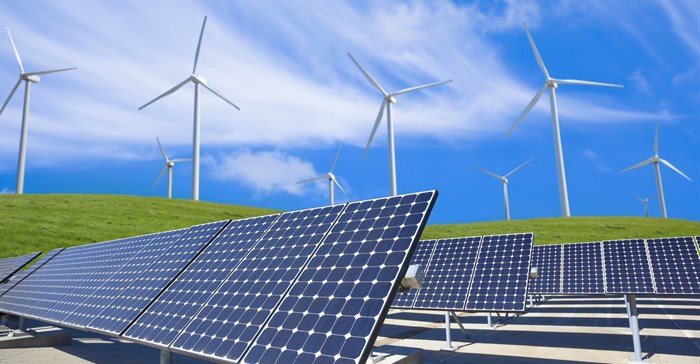
Eskom has been badly maintained through budget overruns, missed timelines and corruption, and Andre de Ruyter, Eskom’s newest in a string of CEOs, recently announced that the country can expect power supply shortfalls for at least another five years.
As a result, private energy generation among homeowners and businesses has surged up to 1MW, which does not require a license from The National Energy Regulator of South Africa (Nersa). Until battery storage becomes more affordable and accessible, we’re have to rely on coal and nuclear energy to be the baseload to the grid, particularly during peak periods that require guaranteed of power; however as technology advances, the storage of renewable energy in batteries will allow users to become entirely self-sustainable with a reliable energy supply.
For now, this self-generation cuts out municipalities, which rely heavily on the income they generate from the sale of electricity from Eskom to users – despite the fact that the parastatal is owed over R35.2bn by various municipalities.
The role of the private sector
To solve our power supply shortly we need money. Let the private sector lead the way
Private sector investors are favoured for renewable energy projects as they can secure funding on commercial terms. This creates accountability in setting up contracts and aligning strategies to develop infrastructure at an agreed cost and delivery date.
The way parastatals and private businesses operate commercially is very different. Independent power producers (IPPs) are highly regulated and adhere to strict contracts to ensure that all corporate, administrative, financial and legal governance is in place. Their boards, shareholders and trusts hold them accountable to ensure their projects are commercially viable, while benefiting locals and empowering nearby communities through revenue-based social economic development fees. Private projects of this nature also include Broad-Based Black Economic Empowerment (B-BBEE) shareholding components.
While traditional power stations take five years to become fully operational from inception, IPPs take about a year to go online, which is hugely advantageous considering our current power shortfall. Once IPPs come online, energy supply can be fast tracked fairly quickly to 10-50MW to supply energy-intensive sectors like mining.
Municipalities as middlemen
To remain profitable in the future, municipalities will try to retain their position as middle men by securing contracts directly with IPPs to supply surrounding communities. To date, Eskom has been the sole purchaser of electricity from IPPs. The Western Cape aims to semi-privatise electricity supply by signing power purchase agreements (PPAs) with IPPs for six of its municipalities to start with and paying for the use of Eskom’s grid to distribute electricity to its users.
Eskom is in the process of splitting into three entities. Two of which will deal with revenue and distribution respectively. On this premise, ahead of the REIPPPP’s implementation, IPPs have been waiting for the parastatal to build new transmission stations to increase capacity and enable electricity distribution.
While these costs and services should be undertaken by Eskom, the IPPs have started to build new transmission stations independently in the meantime to ensure that they meet their projected timelines. This as the global pandemic has already resulted in the holdup of equipment reaching South Africa, which has seen certain IPPs pay penalties for not being online in time.
Long-term solutions
While a reliable electricity supply from IPPs could be fairly cost effective for the end-user and hugely beneficial to the economy and foreign direct investment, there’s the risk that it could be held to ransom by Eskom, which would have to undertake extensive retrenchments to make its business model sustainable. Electricity prices are likely to continue increasing if Eskom continues to be mismanaged.
Procuring an affordable and reliable electricity supply from IPPs is certainly much more affordable in the long run than mooring three power ships at various South African ports. That is not to say that South Africa might not see a mixture of energy supply, with IPPs that use coal or gas, to help alleviate its electricity supply constraints.
While these power ships might appear to be a suitable short gap for now, as IPPs come online, they come at a hefty price. Instead, we need a long-term solution that benefits South Africans, creates new employment opportunities and will create long-lasting economic impact.




